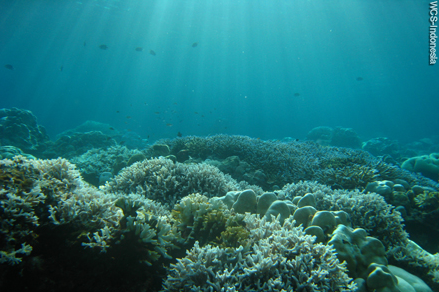Massive coral bleaching in Indonesia
A dramatic rise in the surface temperature of Indonesian waters has resulted in a large-scale bleaching event that has devastated local coral populations. Following a report of a bleaching incident in May, WCS-Indonesia dispatched a “Rapid Response Unit” of marine biologists to investigate. Their initial survey revealed that over 60 percent of corals have bleached. The incident took place in the province of Aceh, on the northern tip of the island of Sumatra. Coral “bleaching,” or whitening, occurs when algae living within coral tissues are expelled. The condition results from stress triggered by environmental factors such as sea surface temperature fluctuations. Some bleached corals may recover over time, while others die. Subsequent monitoring conducted by marine ecologists from WCS, James Cook University in Australia, and Syiah Kuala University in Indonesia were completed in early August. The rate and extent of the coral mortality exceeds that of most other bleachings on record. The scientists found that 80 percent of some species have died since the initial assessment and more colonies are expected to die within the next few months. Sea surface temperatures in the Andaman Sea—an area that includes the coasts of Myanmar, Thailand, the Andaman and Nicobar Islands, and northwestern Indonesia—have been on the rise. According to the National Oceanic and Atmospheric Administration’s Coral Hotspots website, temperatures in the region peaked in late May, when the temperature reached 34 degrees Celsius. This represents a dramatic 4-degree rise over the long-term averages for the area. “It’s a disappointing development, particularly in light of the fact that these same corals proved resilient to other disruptions to this ecosystem, including the Indian Ocean Tsunami of 2004,” said WCS-Indonesia Marine Program Director Dr. Stuart Campbell. …
